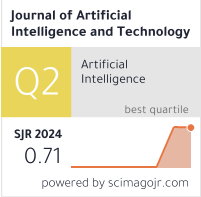Cognitive-Inspired and Computationally Intelligent Early Melanoma Detection Using Feature Analysis Techniques
DOI:
https://doi.org/10.37965/jait.2023.0334Keywords:
melanoma, ML, MRI, skin cancer, SVMAbstract
Melanoma is the most malignant kind of skin cancer, and it is responsible for the majority of deaths caused by skin cancer. However, this can be easily addressed by reverting to the standard method of damage removal if it is discovered in a timely manner. In this view, it is of the utmost importance to develop procedures for the early and reliable identification of melanomas. Since images for melanoma diagnosis are recorded in the clinic as an epiluminant image using a specific kind of equipment, the technique is machine-dependent. We make use of a method for managing images as well as a high-resolution shading image of a skin ulcer captured by a high-resolution camera or other device. Instead of depending on the epilumination images that are produced by the emergency equipment, the initial task that needs to be done in the present research is to capture high-resolution photographs of skin injuries. The category limit will be determined with the use of machine learning, and then highlight extraction will take place. The research focuses on clinical photos obtained from fast cameras that were taken of individuals suffering from skin cancer. The problem of uneven illumination was kept at a strategic distance by the use of medial separation and preprocessing using the histogram. A brand new image segmentation method called “Otsu” is used for the extraction of sores. The extraction of ABCD (Asymmetry, Border, Color, and Dimension) involves the use of innovative methodologies as well as the total dermoscopic value in order to characterize the weight coefficients. A solution to the problem of upgrading the categorization error is based on machine learning. The parameters that are taken into consideration for evaluating the proposed model are sensitivity, specificity, precision, and accuracy, and the results obtained are 1, 0.93, 0.93, and 0.93, respectively. It has been observed that the proposed model performs better as compared to the ones present in the existing literature.
Published
How to Cite
Issue
Section
License
Copyright (c) 2023 Authors

This work is licensed under a Creative Commons Attribution 4.0 International License.





